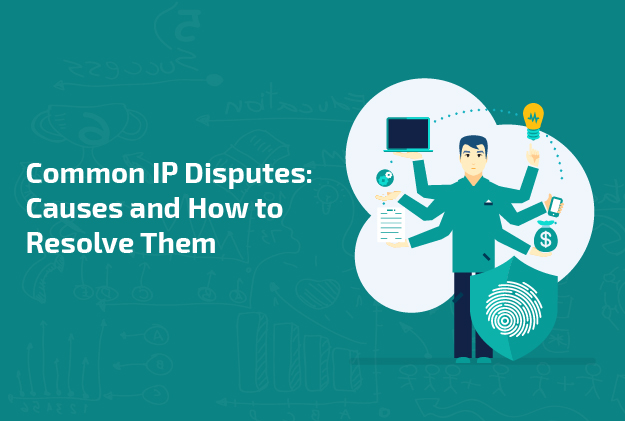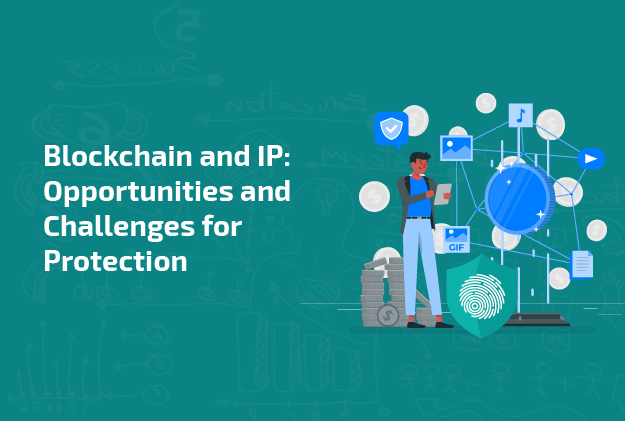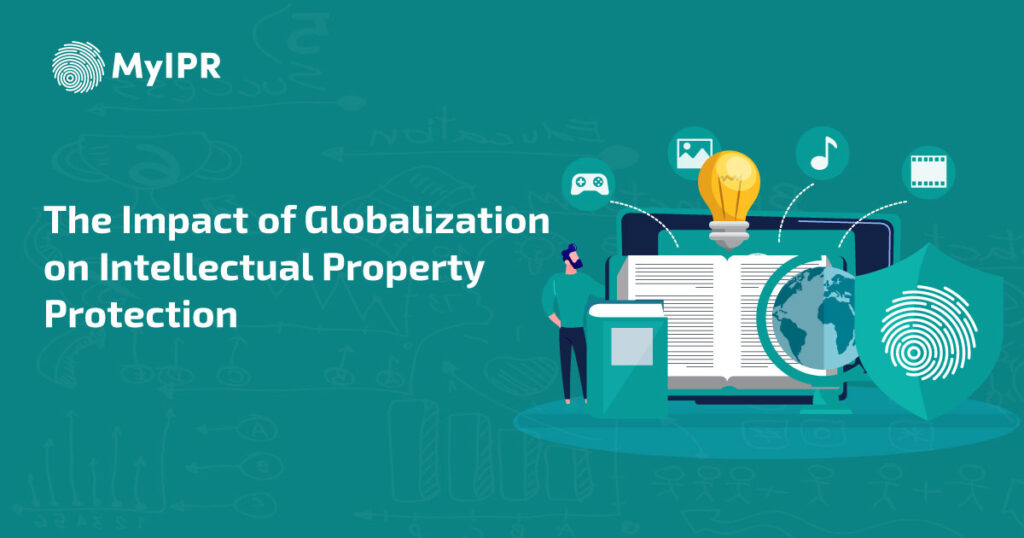
Introduction to Globalization and Intellectual Property
The rising impact of globalization has blurred the boundaries and has facilitated cross-border transactions and economies more effectively than ever. Emerging technologies in trade and communication, fueled by globalization are transforming the economies across the countries. This has expanded businesses, along with intellectual assets, making it crucial for individuals and businesses to secure their ideas. Intellectual Property (IP) Protection is an essential element for continuous innovation and to tackle infringements and violations.
Further, the ongoing international IP Laws are largely shaped by the TRIPS (Trade-Related Aspects of Intellectual Property Rights) Agreement. The rules and regulations are established by standard IP protection framework across World Trade Organization (WTO) member countries. Several countries have a strong framework that aligns with intellectual property rights. However, many times they face challenges in implementation, varying standards of protection, and infringements.
The Evolution of IP Laws and the Influence of Globalization
The progressing intellectual property (IP) laws have been transformed by the onset of globalization. Initially, IP laws were largely framed to secure local inventions, creative ideas, and growth, with the least or no international alignments. These approaches often posed challenges in protection of intellectual assets across borders due to multiple standards as well as definitions.
However, globalization highlighted these issues and the need to focus on a cohesive framework became evident. This led to the foundation of international treaties (e.g., TRIPS, Paris Convention, and Berne Convention). These agreements and conventions aim to synchronize IP laws worldwide, providing inclusive and global protection.
Challenges in IP Protection and Their Solutions
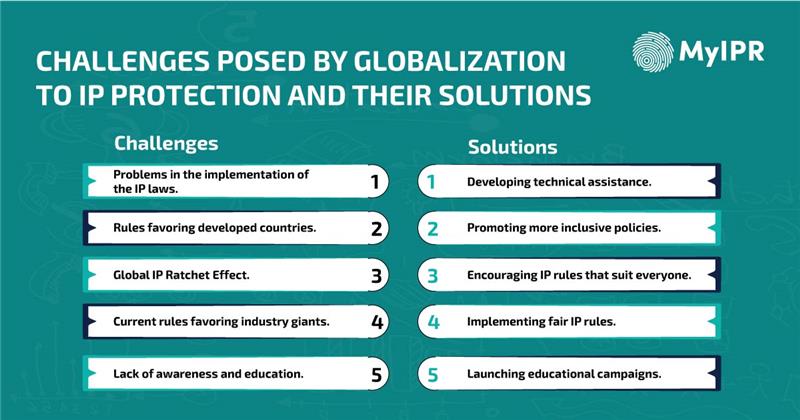
Challenge – Implementation of IP laws and regulations across the globe can be complicated due to non-uniform laws.
Solution – Developing technical assistance and competency-building programs.
Challenge – Several developed countries are favored while developing countries often face disadvantages.
Solution – Promoting more inclusive policies and regulations that protect each country without any geographical limitations or differentiation.
Challenge – The global IP Ratchet Effect restricts several countries from setting their own rules and regulations.
Solution- Encourage an environment that supports countries in negotiating IP rules that suit their needs.
Challenge – The ongoing IP rules and regulations support industry giants, deepening already existing inequalities.
Solution – Making a set of IP rules that complement fair trade practices, aiding countries to benefit equally.
Challenge – Often, countries are not aware of the existing and evolving IP rules, ways to protect them, and their importance.
Solutions – Creating educational campaigns to raise awareness about IP and intellectual property rights, including copyright, patent law, trade secrets, and trademarks, while outlining their importance.
Approaches to Strengthen IP Protection
International Treaties and Frameworks
TRIPS Agreement (Trade-Related Aspects of Intellectual Property Rights): Established on January 1, 1995, the agreement has erected a set of standards for the protection of multiple types of intellectual property rights. It aims to promote innovation with the protection of ideas and catalyzing economic growth.
Paris Convention: It was first enacted in 1883 to protect industrial property. The treaty consists of three foundational principles including, i) national treatment, ii) priority rights for applicants, and iii) the principle of territoriality.
WIPO Copyright Treaty (WCT): Instituted in 1996 under the World Intellectual Property Organization (WIPO), it deals with copyright issues in the digital space. The treaty offers security to the rights of authors in the digital environment and obligates the members to establish strict measures against copyright infringements.
Collaboration Among Nations
Associations among countries share resources and technologies in order to protect IP and combat infringements and violations. By integrating collective knowledge, expertise, tools, and technologies, countries can strengthen the existing capabilities for IP enforcement. These approaches can help establish a united front against IP violations, facilitating easier cross-border security measures.
Leveraging Technology Effectively
- Data analysis for informed decision-making.
- Implementing automation platforms to decrease human errors.
- Cloud computing services for scalable access to resources.
- Customer Relationship Management (CRM) Systems to manage customer interactions.
- Utilizing blockchain technologies and AI for improved IP tracing and protection.
- Platforms like MyIPR to manage and protect intellectual property.
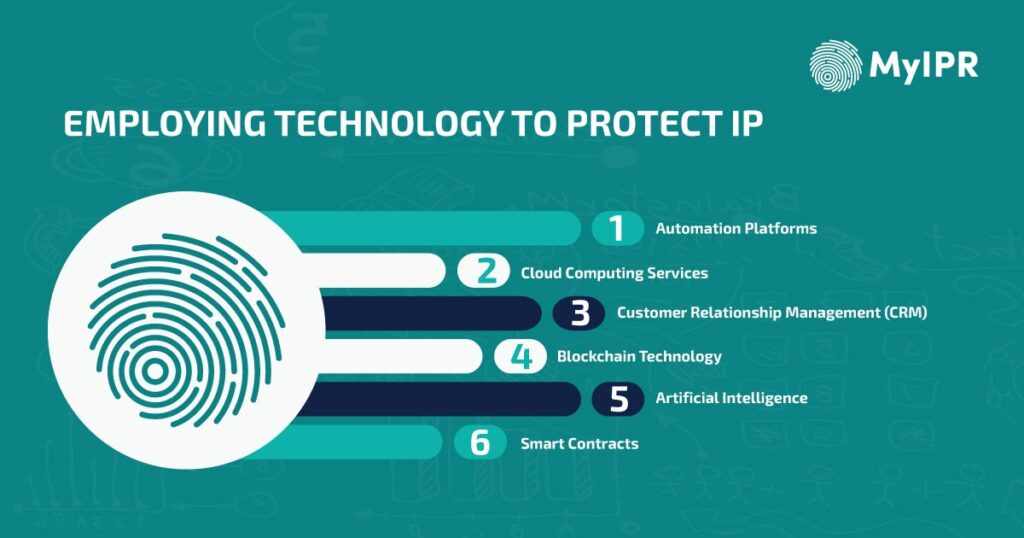
Resolving IP disputes is crucial along with the protection of intellectual assets through intellectual property rights (IPR). However, it is not easy to gain an IPR as the process itself needs some legal requirements and document verification. There comes MyIPR as your savior to protect and safeguard your business endeavors and successive innovations.
MyIPR is designed to mitigate the issues of plagiarism, theft, and misuse of creative ideas. It is a user-friendly application that provides a smooth certification process. This certificate acts as primary evidence that can facilitate the IPR and can be used in case of any feuds or allegations. Blockchain technology offers a robust solution by securely collecting and timestamping evidence of IP creation, making MyIPR a secure platform for creators and businesses to commence their creative ventures in a safe environment. Besides, MyIPR has been molded with an advanced algorithm that can detect the similarities among the different ideas; it can further shrink the chances of the coincidence of double discoveries or processing similar ideas.
Endnotes
In conclusion, the interaction between intellectual property and globalization has reformed the way IPs are managed and protected. With the emergence of new technologies and businesses, intellectual assets have too crossed borders, highlighting the need to improve IP security. Several treaties and entities are establishing the norms for IP protection and management. On one hand, globalization has opened a new arena for collaborations and resource pooling for IP protection. On the other hand, it has also outlined multiple challenges including enforcement hurdles, disparities, and others. These issues can be tackled by utilizing inclusive approaches, raising awareness, and opting for technologies. Additionally, innovative platforms like MyIPR emerge as essential tools for protecting and managing intellectual property. By leveraging innovative technology, MyIPR aims to foster a secure environment for creativity, business, and innovation.
FAQs
What is the relationship between globalization and intellectual property protection?
Globalization increases the need for strong intellectual property protection to safeguard innovations and facilitate international trade.
What are the main challenges businesses face regarding IP in a globalized world?
Businesses face challenges including varying IP laws, enforcement issues, and risk of infringement across different jurisdictions in a globalized world.
How do international treaties affect IP protection?
International treaties establish common standards to enhance cooperation and alignment of IP protection among member countries.
What role does technology play in IP protection today?
Technology increases IP protection through advanced tracking, enforcement tools, and digital rights management.
How can small businesses protect their IP on a global scale?
Small businesses can protect their IP on a global scale, by registering intellectual property rights, utilizing international treaties, and adopting technology.


